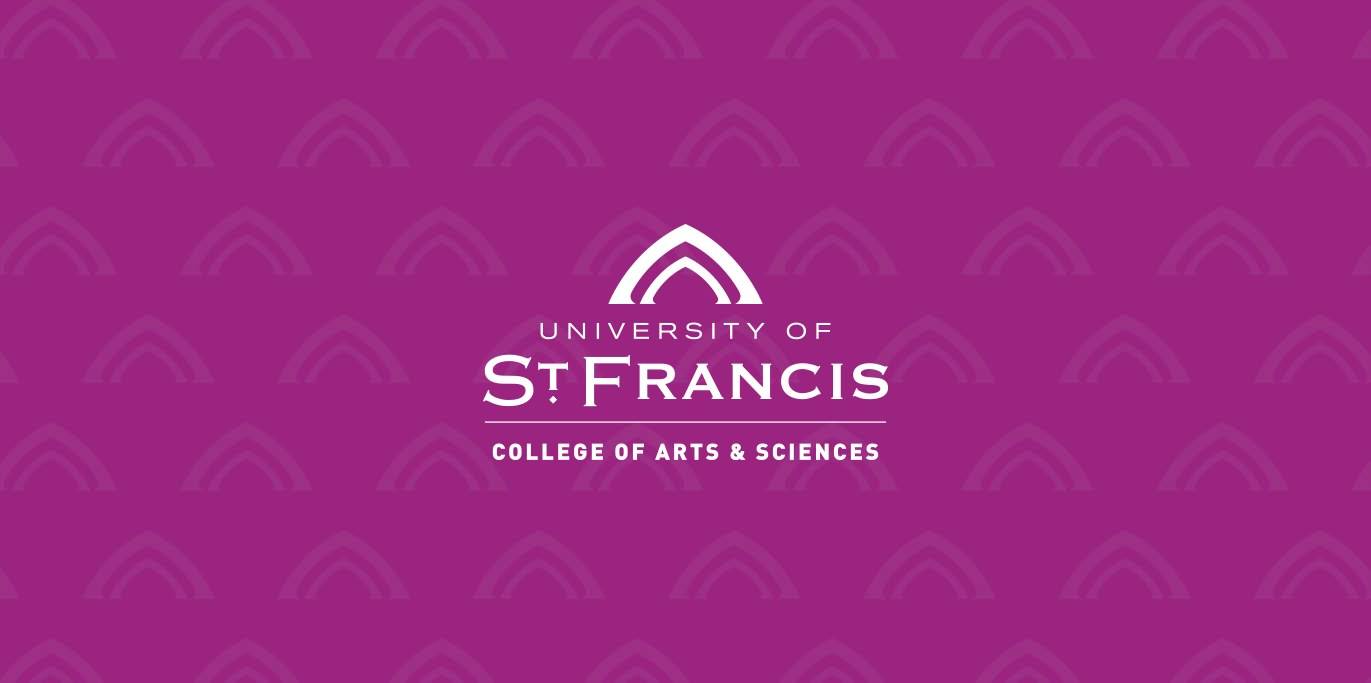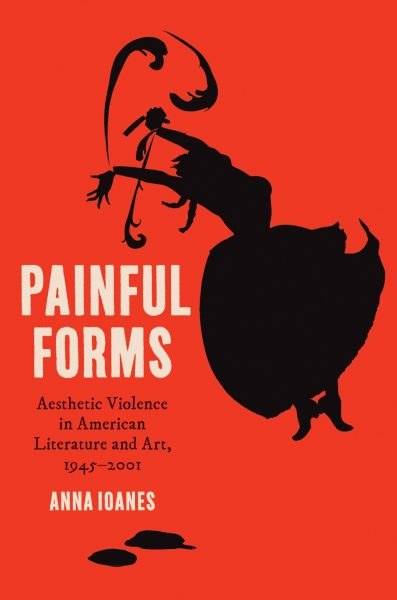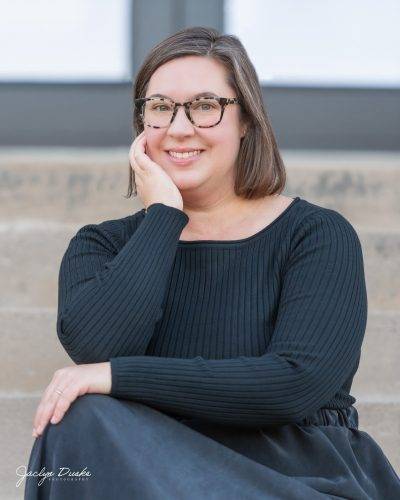

New book by University of St. Francis professor Anna Ioanes Explores Connections between Violence and Beauty in American Literature and Art
 Joliet, Ill. – Anna Ioanes, Associate Professor of English at the University of St. Francis, is excited to announce the release of Painful Forms: Aesthetic Violence in American Literature and Art, 1945-2001, a work of literary criticism that examines five forms of portraying violence in the postwar era, publishing on October 21. Published by the University of North Carolina Press, the book presents new and timely analysis of major figures in US arts and letters.
Joliet, Ill. – Anna Ioanes, Associate Professor of English at the University of St. Francis, is excited to announce the release of Painful Forms: Aesthetic Violence in American Literature and Art, 1945-2001, a work of literary criticism that examines five forms of portraying violence in the postwar era, publishing on October 21. Published by the University of North Carolina Press, the book presents new and timely analysis of major figures in US arts and letters.
In Painful Forms, Anna Ioanes introduces readers to the concept of aesthetic violence, a term originally coined by scholars Leo Bersani and Ulysse Dutoit. Aesthetic violence describes the experience of trying to make sense of artworks that are in fact designed to thwart or frustrate our sense-making strategies. The book explores how aesthetic violence, a concept that originally theorized visual art, can operate in art, performance, and fiction. By defining forms of aesthetic violence in the art, performance, and literature of the long civil rights period, Ioanes shows how aesthetic experiences play a crucial but often overlooked role in social life.
The book analyzes five forms of aesthetic violence to reveal what they tell us about suffering in the US in the period between World War II and the September 11th attacks–a time of reckoning with new technologies of suffering, characterized by global liberation movements and new concepts of violence as structural, systemic, or senseless. The book begins with this historical context, arguing that aesthetic violence also played an important role in shaping how people thought and spoke about the violence of the era.
“Ioanes stages a dialogue between literary texts and artwork to produce rich insights into the relationship between violence, aesthetics, and American art and literature of the late twentieth century,” wrote Stephanie Li, Professor of African & African American Studies at Duke University. “[It’s] a significant contribution.”
Each chapter defines a form of aesthetic violence, showing how the form works across written and visual media to unsettle received narratives about suffering and make room for new ideas. Chapter one compares frame narratives in James Baldwin’s fiction to Andy Warhol’s silkscreen technique, showing how frames unsettle rhetorics of violence. Chapter two focuses on Yoko Ono’s work as a performance artist, poet, and multimedia artist, identifying the happening–a term that emerged in the 1960s to describe performance art events–as a technique for maintaining valuable ambiguity about the meaning of violence.
Chapter three analyzes the fiction of Flannery O’Connor through the lens of her friendship with experimental playwright Maryat Lee, showing how grotesque imagery cautions us against seeing suffering where it may not exist. Chapter four compares Toni Morrison’s fiction to the cut-paper silhouettes of artist Kara Walker to show how its use of outline and shadow short-circuits emotional responses to spectacles of violence. The book’s fifth chapter analyzes collage
techniques in the avant-garde novels of Kathy Acker and their influence on riot grrrl zines, showing how aesthetic violence can help readers comprehend and contest violence in their lives.
A brief conclusion shows how the complicated experience of aesthetic violence helps us make sense of contemporary representations of suffering and how they circulate. With a blend of archival research and insightful formal analysis that tracks aesthetic techniques across media, the book is tailored to scholars of 20th-century US literature, art, and culture, as well as audiences interested in the relationship between beauty and suffering.
Anna Ioanes is an associate professor of English in the College of Arts & Sciences at the University of St. Francis, where she teaches courses in American literature, writing, and cultural theory.

Pictured: Anna Ioanes, photographed by Jaclyn Duske.
Painful Forms is available for pre-order in paperback, hard cover, and ebook through the UNC Press website, bookshop.org, and wherever books are sold. Readers can learn more about the book and author by visiting https://uncpress.org/9781469688947/painful-forms/.
For media or review copy inquiries, please contact Helen Kyriakoudes at helen.kyriakoudes@uncpress.org.
: :
The University of St. Francis, in Joliet, Ill., serves close to 3,000 students nationwide and offers undergraduate, graduate, doctoral and certificate programs in the arts and sciences, business, education, nursing and social work. There are over 53,000 USF alumni across the globe. For information, call 800-735-7500 or visit stfrancis.edu.
University of St. Francis: Bigger thinking. Brighter purpose.
 Joliet, Ill. – Anna Ioanes, Associate Professor of English at the University of St. Francis, is excited to announce the release of Painful Forms: Aesthetic Violence in American Literature and Art, 1945-2001, a work of literary criticism that examines five forms of portraying violence in the postwar era, publishing on October 21. Published by the University of North Carolina Press, the book presents new and timely analysis of major figures in US arts and letters.
Joliet, Ill. – Anna Ioanes, Associate Professor of English at the University of St. Francis, is excited to announce the release of Painful Forms: Aesthetic Violence in American Literature and Art, 1945-2001, a work of literary criticism that examines five forms of portraying violence in the postwar era, publishing on October 21. Published by the University of North Carolina Press, the book presents new and timely analysis of major figures in US arts and letters.
In Painful Forms, Anna Ioanes introduces readers to the concept of aesthetic violence, a term originally coined by scholars Leo Bersani and Ulysse Dutoit. Aesthetic violence describes the experience of trying to make sense of artworks that are in fact designed to thwart or frustrate our sense-making strategies. The book explores how aesthetic violence, a concept that originally theorized visual art, can operate in art, performance, and fiction. By defining forms of aesthetic violence in the art, performance, and literature of the long civil rights period, Ioanes shows how aesthetic experiences play a crucial but often overlooked role in social life.
The book analyzes five forms of aesthetic violence to reveal what they tell us about suffering in the US in the period between World War II and the September 11th attacks–a time of reckoning with new technologies of suffering, characterized by global liberation movements and new concepts of violence as structural, systemic, or senseless. The book begins with this historical context, arguing that aesthetic violence also played an important role in shaping how people thought and spoke about the violence of the era.
“Ioanes stages a dialogue between literary texts and artwork to produce rich insights into the relationship between violence, aesthetics, and American art and literature of the late twentieth century,” wrote Stephanie Li, Professor of African & African American Studies at Duke University. “[It’s] a significant contribution.”
Each chapter defines a form of aesthetic violence, showing how the form works across written and visual media to unsettle received narratives about suffering and make room for new ideas. Chapter one compares frame narratives in James Baldwin’s fiction to Andy Warhol’s silkscreen technique, showing how frames unsettle rhetorics of violence. Chapter two focuses on Yoko Ono’s work as a performance artist, poet, and multimedia artist, identifying the happening–a term that emerged in the 1960s to describe performance art events–as a technique for maintaining valuable ambiguity about the meaning of violence.
Chapter three analyzes the fiction of Flannery O’Connor through the lens of her friendship with experimental playwright Maryat Lee, showing how grotesque imagery cautions us against seeing suffering where it may not exist. Chapter four compares Toni Morrison’s fiction to the cut-paper silhouettes of artist Kara Walker to show how its use of outline and shadow short-circuits emotional responses to spectacles of violence. The book’s fifth chapter analyzes collage
techniques in the avant-garde novels of Kathy Acker and their influence on riot grrrl zines, showing how aesthetic violence can help readers comprehend and contest violence in their lives.
A brief conclusion shows how the complicated experience of aesthetic violence helps us make sense of contemporary representations of suffering and how they circulate. With a blend of archival research and insightful formal analysis that tracks aesthetic techniques across media, the book is tailored to scholars of 20th-century US literature, art, and culture, as well as audiences interested in the relationship between beauty and suffering.
Anna Ioanes is an associate professor of English in the College of Arts & Sciences at the University of St. Francis, where she teaches courses in American literature, writing, and cultural theory.

Pictured: Anna Ioanes, photographed by Jaclyn Duske.
Painful Forms is available for pre-order in paperback, hard cover, and ebook through the UNC Press website, bookshop.org, and wherever books are sold. Readers can learn more about the book and author by visiting https://uncpress.org/9781469688947/painful-forms/.
For media or review copy inquiries, please contact Helen Kyriakoudes at helen.kyriakoudes@uncpress.org.
: :
The University of St. Francis, in Joliet, Ill., serves close to 3,000 students nationwide and offers undergraduate, graduate, doctoral and certificate programs in the arts and sciences, business, education, nursing and social work. There are over 53,000 USF alumni across the globe. For information, call 800-735-7500 or visit stfrancis.edu.
University of St. Francis: Bigger thinking. Brighter purpose.